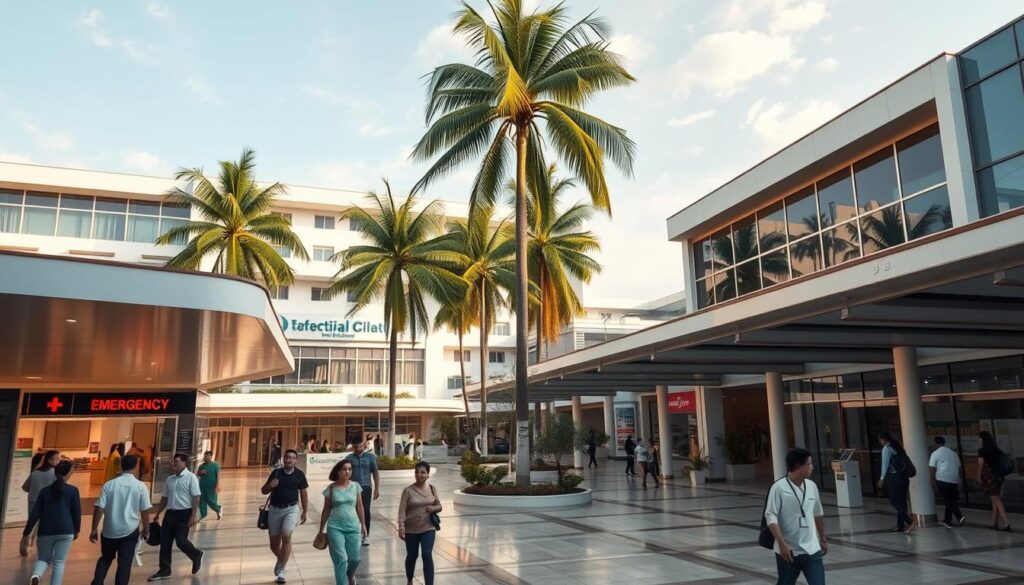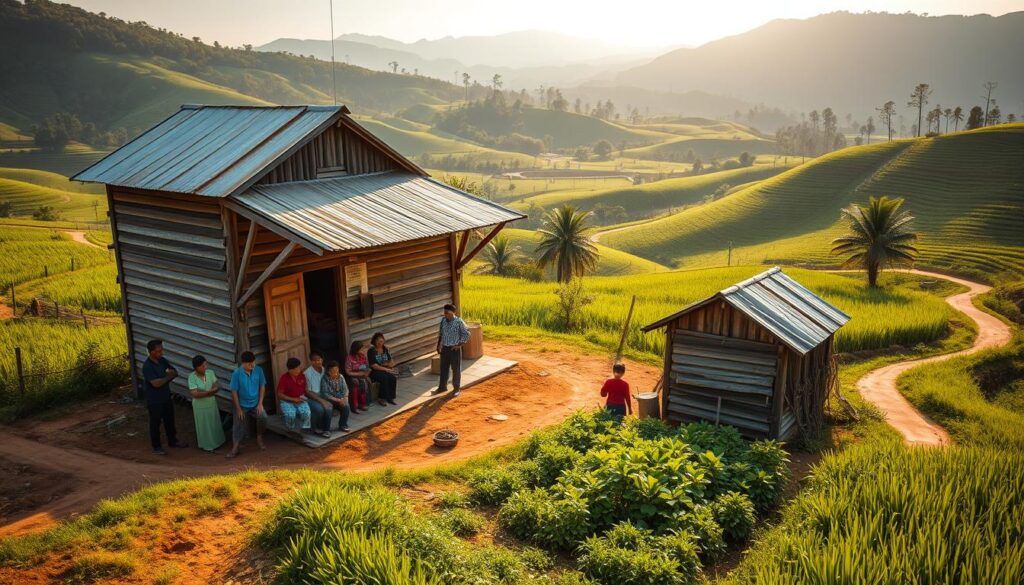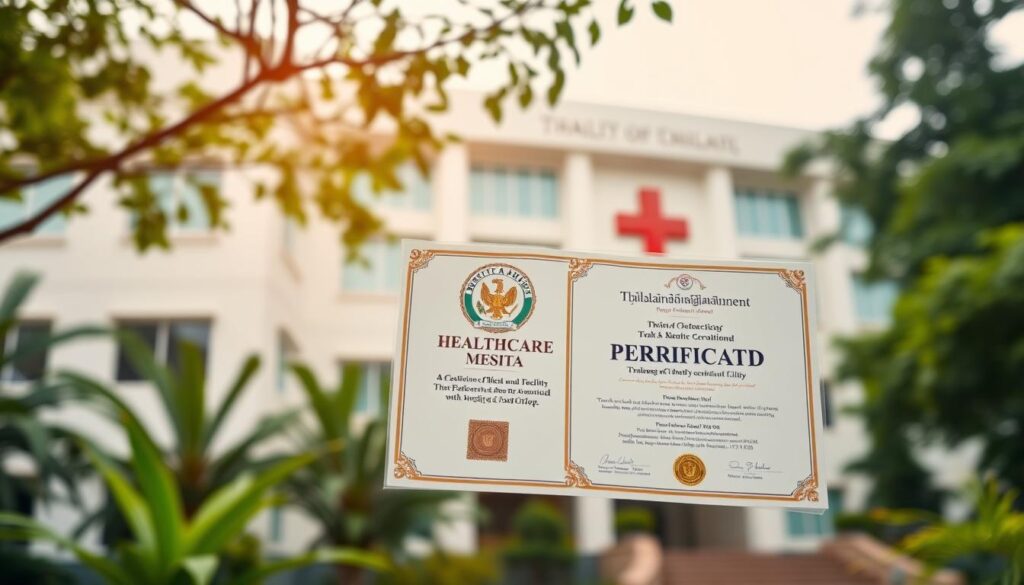Thailand Healthcare Quality: Urban vs. Rural Hospitals
You might be surprised to learn that Thailand’s healthcare system has become a model for medical tourism. Visitors from all over the world come here. This success is thanks to the Universal Coverage Scheme (UCS). It has made healthcare more accessible.
But, there’s a big difference between urban and rural healthcare in Thailand. Rural areas struggle with poor healthcare quality and limited access. This is unlike the better facilities in cities.
When you look into Thailand’s healthcare services, it’s important to know these differences. This knowledge is key for both locals and tourists seeking medical care.
Overview of Thailand’s Healthcare System
Thailand’s healthcare system is a mix of public and private providers. It’s known for its universal coverage scheme (UCS). This scheme covers a big part of the population.
Key Features of Healthcare Delivery in Thailand
Thailand’s healthcare system combines public and private providers. Healthcare services in Thailand aim to be accessible. They focus on both preventing and treating illnesses.
The system has improved a lot in infrastructure and staff. This has made the care better overall.
One important aspect is the focus on healthcare accreditation and standards. Many hospitals, public and private, have international accreditation. This means they meet high standards for patient care and safety.

Importance of Public and Private Sectors
Both public and private sectors are key in Thailand’s healthcare. Public hospitals cover a lot, mainly in rural areas. Private hospitals offer top-notch care with modern facilities and quick service.
The public and private sectors work together for universal health coverage. The private sector brings innovation and new healthcare technologies. This mix keeps care standards high across the country.
In summary, Thailand’s healthcare system is strong and diverse. It has made big progress in providing quality care. The mix of public and private providers, along with a focus on standards, makes Thailand a healthcare leader in the region.
Urban Hospitals: Access and Quality
In Thailand, urban hospitals are known for their top-notch medical care. They have modern facilities and the latest technology. This makes them a top choice for both locals and visitors.
Facilities and Technology
Urban hospitals in Thailand have the latest medical gear. Advanced diagnostic tools and treatment options are available. For example, Bangkok’s hospitals use robotic surgery and advanced imaging.

These hospitals offer a safe and comfy place for patients. They have international accreditations like JCI. This shows their dedication to quality care.
Patient Demographics and Experience
Urban hospitals see a mix of patients, from locals to international visitors. They offer services in many languages. This ensures care is tailored to each patient’s needs.
Improving patient experience is a big focus. Hospitals use surveys and feedback to get better. They aim to make every patient’s journey positive, from start to finish.
Healthcare Professionals in Urban Settings
Healthcare in urban hospitals is top-notch. Many staff members have international training. You can trust the skills of doctors, nurses, and support staff.
But, there are challenges in keeping talent in urban areas. Hospitals are working hard to keep their best staff. They offer good pay and chances for growth.
Rural Hospitals: Challenges and Opportunities
Exploring healthcare in Thailand, you’ll see rural hospitals face big challenges. Yet, there’s room for growth and better healthcare delivery.
Access to Care in Remote Regions
Rural areas in Thailand have a hard time getting to healthcare. The distance to hospitals and clinics is big, making it hard for people to get medical help on time.
Some rural communities use mobile health clinics or community health workers. They help fill the gap in healthcare access.

Types of Services Offered
Rural hospitals in Thailand provide many services. These include emergency care, outpatient services, and programs for maternal health. These services are key for keeping rural populations healthy.
- Emergency medical services
- Outpatient clinics
- Maternal and child health programs
Community Health Initiatives
Community health initiatives are vital in rural areas. They involve local healthcare providers, community groups, and government agencies working together.
These initiatives include health education, vaccination campaigns, and disease prevention. By working with the local community, they can greatly improve healthcare outcomes.
Comparative Analysis of Healthcare Quality
Studies show that urban hospitals in Thailand do better than rural ones in many areas. This highlights the need to understand why there’s a gap.
Performance Indicators for Urban vs. Rural Hospitals
There are important indicators for healthcare quality, like healthcare accreditation and following healthcare standards. Urban hospitals usually get better ratings and stick to standards more than rural ones.
- Urban hospitals have better facilities and tools.
- Rural hospitals struggle with fewer resources and less access to special care.
- The number of healthcare workers in cities versus rural areas affects patient care in Thailand.

Patient Satisfaction and Outcomes
Patient happiness and health results are key to measuring healthcare quality. Research shows city hospitals get higher satisfaction and better health results than rural ones. This is due to the quality of care and follow-up services.
Looking at patient satisfaction, urban areas usually have better follow-up care. This leads to better health outcomes for patients.
Case Studies from Different Regions
Looking at case studies from around Thailand gives us useful insights. For example, Bangkok’s hospitals are often seen as the best in patient care. But, rural hospitals in places like Chiang Mai face special challenges that affect their quality.
- A study from a big city hospital shows the value of modern healthcare tech.
- Programs in rural areas aim to boost health outcomes through community efforts.
- Healthcare accreditation is key to maintaining high patient care standards, as seen in urban hospitals.
Understanding these differences helps policymakers and healthcare experts improve quality across Thailand.
Future Directions for Improving Healthcare
The Thai government is working hard to make Thailand Healthcare Quality better. They are focusing on making healthcare more accessible and improving it in rural areas.
Enhancing Healthcare Accessibility
They are creating new policies to help rural hospitals. This way, everyone in Thailand can get the healthcare they need.
Leveraging Technology
Technology is playing a big role in improving healthcare. Telemedicine and digital health records are being used to help people in remote areas.
Sustainable Healthcare Model
Creating a sustainable healthcare model is key for Thailand’s future. It means improving infrastructure and making healthcare affordable and eco-friendly. This will also help Thailand’s medical tourism industry grow.







